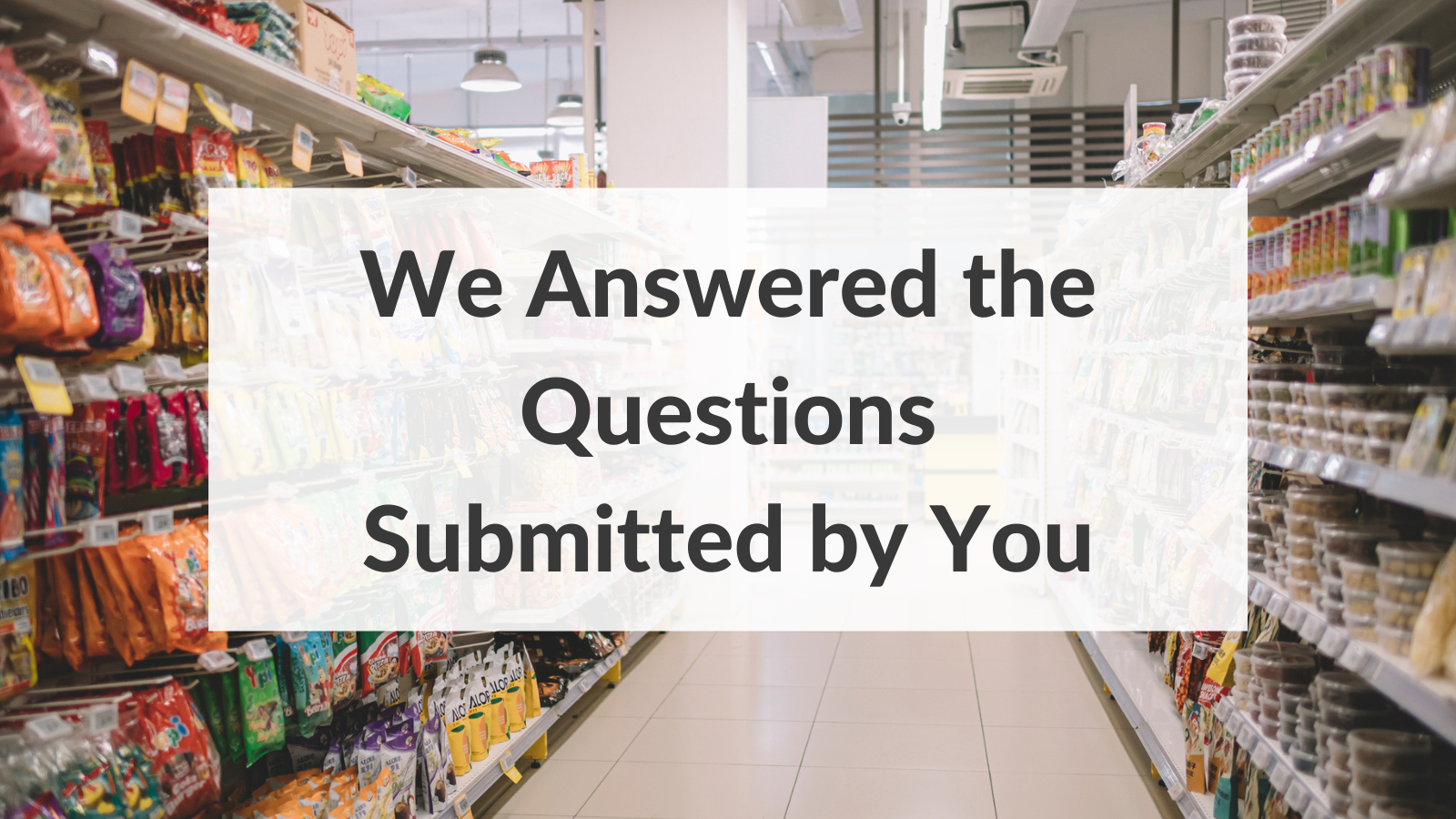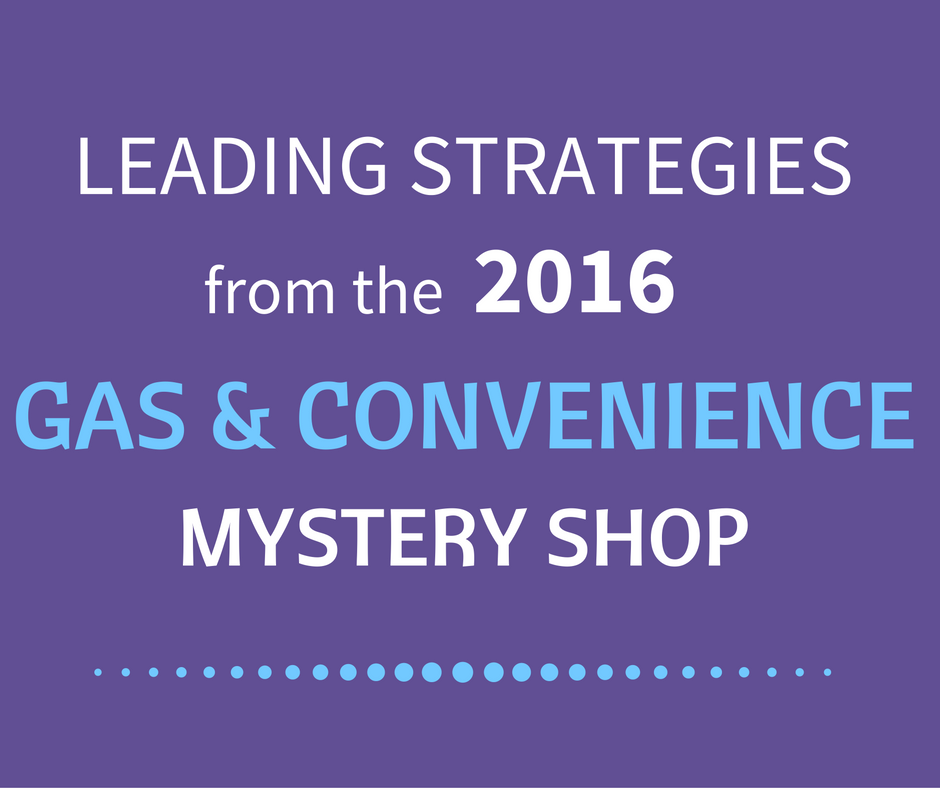Leading Strategies from the 2016 Gas and Convenience Mystery Shop
For over a decade, we’ve been working with CSP Magazine to conduct an annual mystery shopping study with the top gas and convenience chains in the...
5 min read
Jon Laurie-Beaumont March 21, 2022

It's a great time to be in the convenience industry. The changes in consumer habits that we’ve tracked over the past two years show people are making more local purchases, shifting the times they visit stores to avoid crowds, and wanting to complete their purchase quickly - all of which feed directly into the original model of convenience stores.
To help you make the most of these trends, our latest Ask Me Anything webinar featured Intouch Insight’s Vice President of Operations, Andrée-Anne Chaillier and President & CEO, Cameron Watt answering your questions about how convenience stores can most effectively use mystery shopping programs.
We've included a recording of the entire session below or keep reading for an overview of questions discussed.
The launch of any mystery shopping program will involve mapping out your customer journey and identifying, as Andrée-Anne called them, “moments of truth”. These are touch points throughout the customer journey that matter the most to the brand and consumers.
This means you can adjust an existing mystery shopping program to include your new fresh food offerings by first identifying any changes to your customer journey and then the new “moments of truth” related to this new offering. In the example of fresh food, these would likely be questions around product availability, displays, freshness, time to receive order etc.
It’s important to note that when adding new questions to an existing mystery shopping questionnaire, you need to be careful not to over-do it. Expanding an existing program can dilute your original results and may not allow you to collect enough data to evaluate your new initiative, in this case fresh food. In this case, it may be better to add a new program, rather than expand an existing program.
As more and more convenience stores expand their offerings to things such as fresh food and groceries, “channel blurring” or “the classic share of stomach problem”, as Cameron refers to it, has become ever more prevalent. Convenience stores are not just competing with other brands within their industry but rather all brands that offer overlapping goods or services. This means if your store offers fresh food, you’re competing with quick serve restaurants in addition to other convenience stores.
The key to a successful competitor program is to ensure you are measuring your competition based on the same standards that you do your own locations – regardless of their industry. This means a mystery shopper who is evaluating a grocery store you’ve identified as a competitor should be using the same questionnaire used when evaluating one of your location’s grocery sections. This will ensure you can draw a direct comparison and drive insights you can action.
“Frequency varies a lot across our clients,” says Andrée Anne, “but the average mystery shopping program is monthly.” Operational audits can sometimes be less frequent, but no one is conducting them less than quarterly and responsible sales programs often involve visits every two months on average.
“At the end of the day, budget will always be at the forefront,” adds Cameron. “There’s no point in conducting another audit before talking to the location about the results of the first one.” Stores need to be given an opportunity to improve based on the learnings from each visit. As a result, frequency should also consider your ability to follow up on the data.
Because mystery shopping provides snapshots of a single visitor's experience and audits are an overt inspection of your operations, it can take more visits to provide statistically significant data from a mystery shopping program.
Regardless of which type of program you’re running, it’s best to focus on impact. “Budget is important, but so is getting something for your money.” says Cameron. So long as the frequency is enough to drive improvements, you’ll find the program pays for itself.
“Yes, everything can be measured with mystery shopping,” says Cameron with a smile. “As long as it’s a customer experience, you can measure it.” Intouch Insight has been helping partners with mystery shopping programs around third-party delivery as well as conducting studies to determine which platforms and brands are offering the best experience.
There are two driving factors to when you should measure a new sales channel. One is to ensure it is properly executed at launch. New programs that fail usually do so because of improper execution, i.e. not doing what you set out to, or incorrect audience, i.e. a miscalculation of demand among your consumers. By launching a mystery shopping program in tandem with a new sales channel you can measure and ensure proper execution.
The second is when a new channel becomes a significant enough part of your revenue. For example, if 10% of your customers use BOPIS services but that channel does not meet the same customer experience standards as a regular in store purchase, 1 in 10 customers are having a substandard experience with your brand. For the best of both worlds, consider launching a mystery shopping program in tandem with a new offering and then, if budget is a concern, pull back on continued measurement until it’s a large enough percentage of your sales.
“Thinking that combining two programs will bring you savings is completely normal,” says Adnrée-Anne, “however, combining a compliance program with a customer service program brings other challenges that cannot be ignored.”
Compliance audits require mystery shoppers to be within a limited age range to best evaluate whether employees are complying with regulations around the sale of age restricted goods, but it’s unlikely this age range will represent a majority of your customers. Limiting the age range of mystery shoppers evaluating your customer service can skew the data collected and not account for the diversity of your overall consumer base.
Additionally, given the different goals of the programs, collecting the data required for both results in an extremely long mystery shopper questionnaire which poses a risk to the quality of data being collected. As a result, we always recommend managing these different types of mystery shopping programs separately.
While Intouch Insight’s software can be used to measure employee experience, we do not currently consult on these types of programs. We have, however, observed a direct correlation between employee experiences and customer experiences. As Cameron says, “If your employees are not happy and satisfied, I guarantee your customers are not happy and satisfied.”
Since the pandemic, employees are expecting more flexibility. “It’s that work life balance that we’ve talked about for decades,” explains Cameron, “and there’s a bit of a revolution right now to make it happen.”
Thank you again to all the attendees and for the great questions we received! You can learn more about our solutions for convenience stores here and, if you have any questions about implementing or updating a mystery shopping program for your business, reach out to us here and we’ll connect you with a member of our team.

For over a decade, we’ve been working with CSP Magazine to conduct an annual mystery shopping study with the top gas and convenience chains in the...
![Petro-Convenience Mystery Shopping [Infographic]](https://www.intouchinsight.com/hubfs/PETRO-CONVENIENCE%20MYSTERY%20SHOPPING.png)
In petro-convenience stores, you no longer just have gas pumps to worry about. The industry is always growing and shifting - with everything from...
![Convenience and Gas Mystery Shopping [Infographic]](https://www.intouchinsight.com/hubfs/Images/Blog/Too-Much-Customer_Experience-Data%20(1).jpg)
At convenience and gas stores, you no longer just have gas pumps to worry about. The industry is always growing and shifting - with everything from...